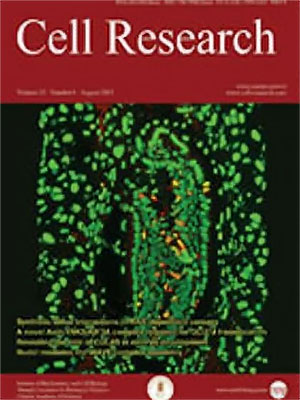
Volume 11, No 1, Mar 2001
ISSN: 1001-0602
EISSN: 1748-7838 2018
impact factor 17.848*
(Clarivate Analytics, 2019)
Volume 11 Issue 1, March 2001: 8-16
ORIGINAL ARTICLES
Involvement of chromatin and histone acetylation in the regulation of HIV-LTR by thyroid hormone receptor
Shao Chung Victor HSIA, Hua WANG, Yun Bo SHI*
Unit on Molecular Morphogenesis, Laboratory of Molecular Embryology, National Institute of Child Health and Human Development, National Institute of Health, Building 18T, Room 106, Bethesda, MD 20892-5431, USA
Correspondence:
The HIV-1 LTR controls the expression of HIV-1 viral genes and thus is critical for viral propagation and pathology. Numerous host factors have been shown to participate in the regulation of the LTR promoter. Among them is the thyroid hormone (T
3) receptor (TR). TR has been shown to bind to the critical region of the promoter that contain the NFβB and Sp1 binding sites. Interestingly, earlier transient transfection studies in tissue culture cells have yielded contradicting conclusions on the role of TR in LTR regulation, likely due to the use of different cell types and/or lack of proper chromatin organization. Here, using the frog oocyte as a model system that allows replication-coupled chromatin assembly, mimicking that in somatic cells, we demonstrate that unliganded heterodimers of TR and RXR (9-cis retinoic acid receptor) repress LTR while the addition of T
3 relieves the repression and further activates the promoter. More importantly, we show that chromatin and unliganded TR/RXR synergize to repress the promoter in a histone deacetylase-dependent manner.
FULL TEXT | PDF
Browse 2553


